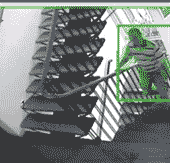
The Art of Smart
Intelligent video solutions stop data theft in its tracks
- By Megan Weadock
- Oct 02, 2007
It's a terrifying thought -- a hacker breaks past a company's firewall and has unlimited access to a jackpot of data, from employee information to trade secrets and financial details.
Most businesses realize the importance of protection against data theft. But if they are not also physically securing access to their computer servers, companies are facing even greater risks. This threat is what led Arteco, a provider of intelligent video solutions, to offer its customers additional protection to their normal software security by stopping the threat of physical access to computer servers.
A Proactive Approach
Arteco was founded in 1987 as a developer of motion control technology for industrial machinery, according to Ray Rudy, national sales manager for Arteco. The company pioneered the field of virtual numeric control, which led to the development of artificial intelligence algorithms to detect the size, speed and direction of objects within a video field. In 2000, Arteco launched its first intelligent video solution (IVS) in the European market, and its popularity soon spread.
"Access control, fire and security products all detect and alert in real time, but historically, video security has been very reactive in nature," Rudy said. "Intelligent video is proactive in nature, just like every other major product group in the industry."
In an IVS, user-defined rules, which are unique to each security situation, are applied to a series of filters on each video channel. When the software detects an event in a camera's field of view, the system triggers a visible and audible signal and notifies personnel through e-mail or SMS message from a computer or mobile device. Then, security officers physically validate the threat by acknowledging the alert and taking necessary countermeasures.
Intelligent video is designed specifically for violated area and virtual perimeter detection. This can be confused with motion detection, which simply detects a change in pixilation that could be caused by a variety of innocent events, such as a tree branch blowing in the wind. IVS technology uses size parameters to isolate and detect specific objects, instead of all motion.
"Intelligent video was born out of machine vision-based motion controls, which gave Arteco-IVS flexibility and accuracy, because you have an extremely small margin of error in manufacturing motion controls," Rudy said. "An error in motion control could cost a manufacturer thousands of dollars -- and in security, these errors usually become false alarms. Our product experience has really given us an edge in reducing false alarm rates."
The Eye in the Sky
In offering its customers IVS to protect their servers, Arteco is looking to make clients more aware of their physical assets, rather than just their electronic ones.
"Businesses spend millions of dollars installing computer software to prevent hackers and data theft, but they must realize that if someone tampers with their hardware, they have given thieves the keys to the kingdom," said Steve Birkmeier, vice president of marketing at Arteco. "Even in remote or third-party collocation centers, companies are using intelligent video to protect data-sensitive hardware because of its proactive security measures."
In June, Pfizer Inc., one of the world's largest pharmaceutical research companies, commissioned Arteco to install such a system to protect its hardware at a collocation center in San Diego. Since the facility is housed in a building with several other companies, Pfizer needed to ensure that no unauthorized personnel could tamper with its data-sensitive servers. The company chose the Arteco-IVS to complement card access to the center's gate, giving offsite security officials real-time video validation of unauthorized entry through tailgating, force or other means.
Sean Mullen, senior advisor of systems at Pfizer, says IVS has made the facility much more secure than it was with only a card reader controlling access.
"It provides an added layer of security in that it alerts our Security Control Center through a visual and audible alarm that someone has entered a secure area," he said. "Security can then view all angles of the space from a central location and dispatch personnel as needed."
Not only is Mullen reassured that Pfizer's hardware is safe at the center, he also enjoys the fact that IVS is saving the company money. With Arteco's cameras detecting suspicious movement and unauthorized entry, Pfizer doesn't need security officials staring at surveillance monitors for eight hours a day.
"The bottom line is cost savings," Mullen said. "We are always asked to come up with new technology that enables us to reduce staff without sacrificing security. With intelligent video we are able to do more with less. Prior to the install, we required an officer to monitor the cameras 24/7; today that same officer can simultaneously perform other job duties and only needs to respond once an alarm is triggered. This enables 24/7 coverage of the space without constant monitoring."
The Next Step
After such a successful installation, Pfizer now plans to incorporate IVS into all restricted areas at its San Diego location. And it appears the company was wise in its decision to invest in intelligent video -- it is now the fastest-growing product segment in the security industry, as both dealers and end users begin to realize its benefits to video security applications.
"The rapid increase in the deployment of cameras is creating a huge video data problem that requires not only more manpower to monitor and determine threat legitimacy, but also hard-drive capacity to store the thousands of Gigabytes that are being produced constantly," Rudy said. "Video analytics filters this data and drives only pertinent information to personnel to make a decision. There is no question that analytics is the next logical step in video security."